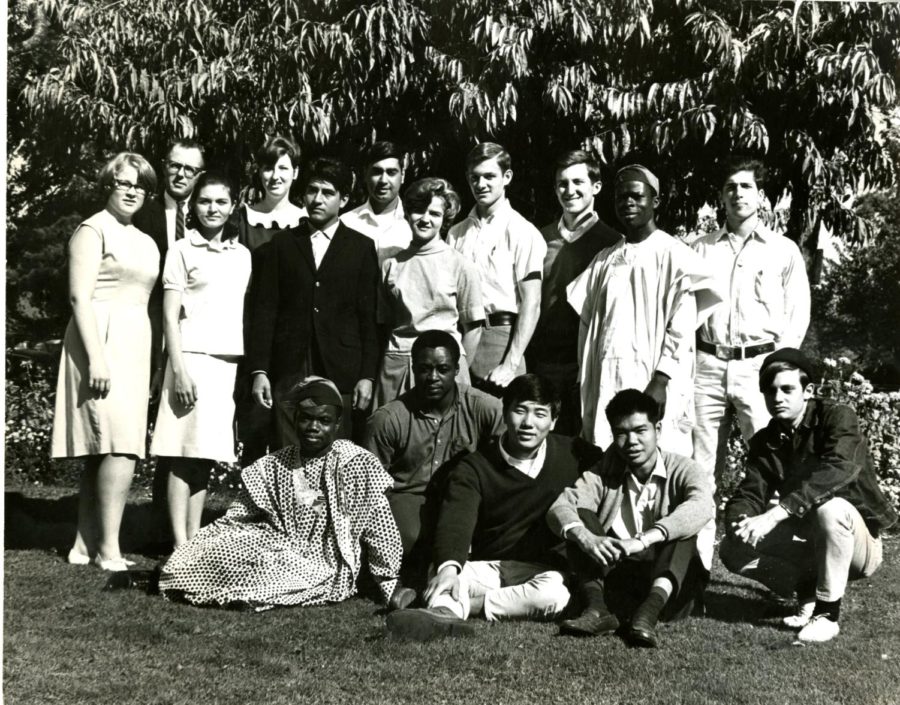Historically, financial limitations prevented most people from outside the United States from pursuing an education in the country. The range of international students who attend Santa Rosa Junior College has greatly expanded since the school’s first round of visitors.
The first international students came to SRJC during the 1940s and the oldest reference to their presence can be found in a 1957 article from The Oak Leaf titled, “New International Club.”
Oak Leaf staff reported, “Sixteen foreign students, representing 10 different countries enrolled at SRJC, feel that with world tension at its greatest, living together and learning the ways of others is of the greatest importance.”
According to the article, students from countries such as France, Italy, Germany, Iran, Korea, Indonesia, China, Japan and others were the first International Club members. They created the club with the idea of discussing social problems and finding ways to ease the international students’ struggles of living in a different country.
Later in the same year, an Oak Leaf article mentioned the club’s first major act with the headline, “International Students Speak To JC Mothers.”
Members of the International Students Club participated in a panel discussion at the monthly Mothers’ Club meeting in the faculty lounge. They discussed the times’ issues and got in contact with each other to find solutions.
Most of the students came to SRJC because they knew someone in the area or because they applied like any other American student. Essentially, international students came to SRJC in an informal way.
In 1984 SRJC started recruiting F1-Visa students, which are students that have permission to live in the U.S. for school. Peter Brainich, manager of international relations at the time, processed the applications.
Eight years later in 1992, Kim Hunt was hired as international students adviser and began processing these applications and monitoring all reports to the Department of Homeland Security. By this time SRJC’s international students population was somewhere between 40 to 50 students.
In January 2012, SRJC hired Dr. Frank Chong as the school’s fifth president. One of Dr. Chong’s goals was to increase diversity on campus through the recruitment of international students.
He hired Peg Saragina, a full-time business instructor, as director of international programs. The program was interested in international relations and conducting research growing the international program.
Finally, during Fall 2012, the International Office opened.
Peg Saragina said, “We want our local students to be more exposed and not read it out of a book.”
Saragina and Dr. Chong’s main reason for bringing international students is to achieve the goal of diversifying the SRJC campus.
Each spring SRJC hosts around 20 students from Borås, Sweden. They are third-year students in a business entrepreneurship program and they stay with SRJC faculty and community members.
SRJC employees travel the world to recruit students. Presently 194 international students are enrolled. The international department’s goal for next semester is to expand the amount of foreign students to 400.



lance johnson • Apr 25, 2018 at 2:26 pm
Let’s face it, being an international student away from home is difficult, compounded by our complex culture and language problems. Welcoming and assimilation assistance must come from numerous sources, including the White House, to aid these young people embarking on life’s journey. Most struggle in their efforts and need guidance from schools’ international departments, immigration protection, host families, concerned neighbors and fellow students, and even informative books to extend a cultural helping hand.
Something that might help anyone coming to the US is the award-winning worldwide book/ebook “What Foreigners Need To Know About America From A To Z: How to Understand Crazy American Culture, People, Government, Business, Language and More.” Used in foreign Fulbright student programs and endorsed worldwide by ambassadors, educators, and editors, it identifies how “foreigners” have become successful in the US, including students.
It explains how to cope with a confusing new culture and friendship process, and daunting classroom differences. It explains how US businesses operate and how to get a job (which differs from most countries), a must for those who want to work with/for an American firm here or overseas.
It also identifies the most common English grammar and speech problems foreigners have and tips for easily overcoming them, the number one stumbling block they say they have to succeeding here.
Good luck to all wherever you study or wherever you come from, because that is the TRUE spirit of the American PEOPLE, not a few in government who shout the loudest! Supporters of int’l students must shout louder.